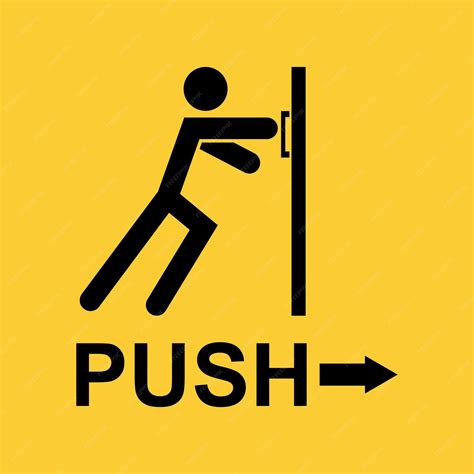What’s the optimal 3-day split for peak strength & muscle gain?

For many fitness enthusiasts, balancing training intensity, frequency, and recovery within a busy schedule can be a significant challenge. This is where the 3-day split shines, offering an incredibly effective and time-efficient framework for those aiming to maximize both strength and muscle hypertrophy. Far from being a compromise, a well-designed 3-day routine can provide ample stimulus for growth while allowing crucial recovery, making it a staple for beginners and advanced lifters alike.
The Undeniable Advantages of a 3-Day Split
The beauty of a 3-day split lies in its inherent balance. Training three times a week provides sufficient frequency to stimulate muscle protein synthesis regularly, without overtaxing the central nervous system or hindering recovery. This setup allows for:
- Enhanced Recovery: With 4 rest days built into the week, your muscles have ample time to repair and grow stronger.
- Higher Intensity Potential: Fewer training days mean you can push harder on each session, focusing on quality over quantity.
- Consistent Frequency: Hitting each major muscle group directly or indirectly at least once a week, often more, which is ideal for growth.
- Time Efficiency: Perfect for those with busy schedules, ensuring you can stick to your plan consistently.

Core Principles for Maximizing Your Gains
Regardless of the specific 3-day structure you choose, certain principles are universal for achieving peak strength and muscle gain:
- Prioritize Compound Movements: Exercises like squats, deadlifts, bench presses, overhead presses, and rows should form the backbone of your routine. These movements engage multiple muscle groups simultaneously, leading to greater strength gains and hormonal response.
- Implement Progressive Overload: To continuously get stronger and build muscle, you must consistently challenge your body. This means gradually increasing the weight, reps, sets, or decreasing rest times over time.
- Focus on Proper Form: Executing exercises with correct technique not only prevents injuries but also ensures that the target muscles are effectively stimulated.
- Adequate Nutrition and Recovery: Training is only half the battle. Consuming sufficient protein, carbohydrates, and healthy fats, along with getting 7-9 hours of quality sleep, is crucial for muscle repair and growth.

Popular & Effective 3-Day Split Structures
While the goal is consistent, the methodology can vary. Here are some highly effective ways to structure a 3-day training week:
1. Full Body Training (3x/Week)
This classic approach involves training all major muscle groups in each session, typically on non-consecutive days (e.g., Monday, Wednesday, Friday). It’s excellent for beginners and intermediates due to its high frequency and potential for rapid skill acquisition on main lifts. Each muscle group is hit three times a week, providing a strong stimulus for both strength and hypertrophy.

2. Upper / Lower / Full Body (Hybrid)
A versatile split that dedicates specific days to upper and lower body, then finishes the week with a comprehensive full-body or strength-focused session. This allows for higher volume on specific muscle groups while still maintaining frequency across the week. For example:
- Day 1: Upper Body Focus (Chest, Back, Shoulders, Arms)
- Day 2: Lower Body Focus (Quads, Hamstrings, Glutes, Calves, Abs)
- Day 3: Full Body/Strength Focus (Key compound lifts, targeting areas that need more work)
3. Push / Pull / Legs (PPL – One Cycle/Week)
While often seen as a 6-day split, PPL can be effectively run over three days for maximum recovery and intensity (e.g., Push on Monday, Pull on Wednesday, Legs on Friday, with four rest days). This structure groups movements by their action:
- Push Day: Chest, Shoulders, Triceps (e.g., Bench Press, Overhead Press, Dips)
- Pull Day: Back, Biceps (e.g., Deadlifts, Rows, Pull-ups, Bicep Curls)
- Legs Day: Quads, Hamstrings, Glutes, Calves, Abs (e.g., Squats, Lunges, Leg Curls)

Sample Optimal 3-Day Split: Hybrid Approach
Let’s outline a robust 3-day split that combines the benefits of focused training with a full-body strength emphasis, suitable for both strength and muscle gain. Remember to warm up thoroughly before each session and cool down afterward.
Day 1: Upper Body Power
- Barbell Bench Press: 3-4 sets of 5-8 reps
- Weighted Pull-ups / Lat Pulldowns: 3-4 sets of 6-10 reps
- Dumbbell Overhead Press: 3 sets of 8-12 reps
- Barbell Rows: 3 sets of 6-10 reps
- Triceps Pushdowns: 3 sets of 10-15 reps
- Bicep Curls: 3 sets of 10-15 reps
Day 2: Lower Body & Core Strength
- Barbell Squats: 3-4 sets of 5-8 reps
- Romanian Deadlifts: 3 sets of 8-12 reps
- Leg Press: 3 sets of 10-15 reps
- Calf Raises: 3 sets of 15-20 reps
- Plank: 3 sets (hold for 30-60 seconds)
- Ab Rollouts / Crunches: 3 sets of 10-15 reps
Day 3: Full Body & Strength Reinforcement
- Deadlifts: 3-4 sets of 3-5 reps (or power cleans/snatches if advanced)
- Incline Dumbbell Press: 3 sets of 8-12 reps
- Seated Cable Rows: 3 sets of 8-12 reps
- Face Pulls: 3 sets of 12-15 reps
- Leg Extensions: 3 sets of 10-15 reps
- Overhead Triceps Extension: 3 sets of 10-15 reps
- Lateral Raises: 3 sets of 12-15 reps
Rest days should be planned strategically around these training days to allow for optimal recovery, for example, Mon/Wed/Fri or Tue/Thu/Sat.

Conclusion: Consistency and Adaptation are Key
An optimal 3-day split isn’t just about the exercises; it’s about intelligent programming, relentless consistency, and paying attention to your body’s signals. By focusing on compound movements, progressive overload, proper nutrition, and adequate rest, a 3-day split can indeed be the perfect vehicle for achieving peak strength and significant muscle gains. Experiment with different structures, find what resonates with your body and schedule, and commit to the process. Your gains will thank you.







